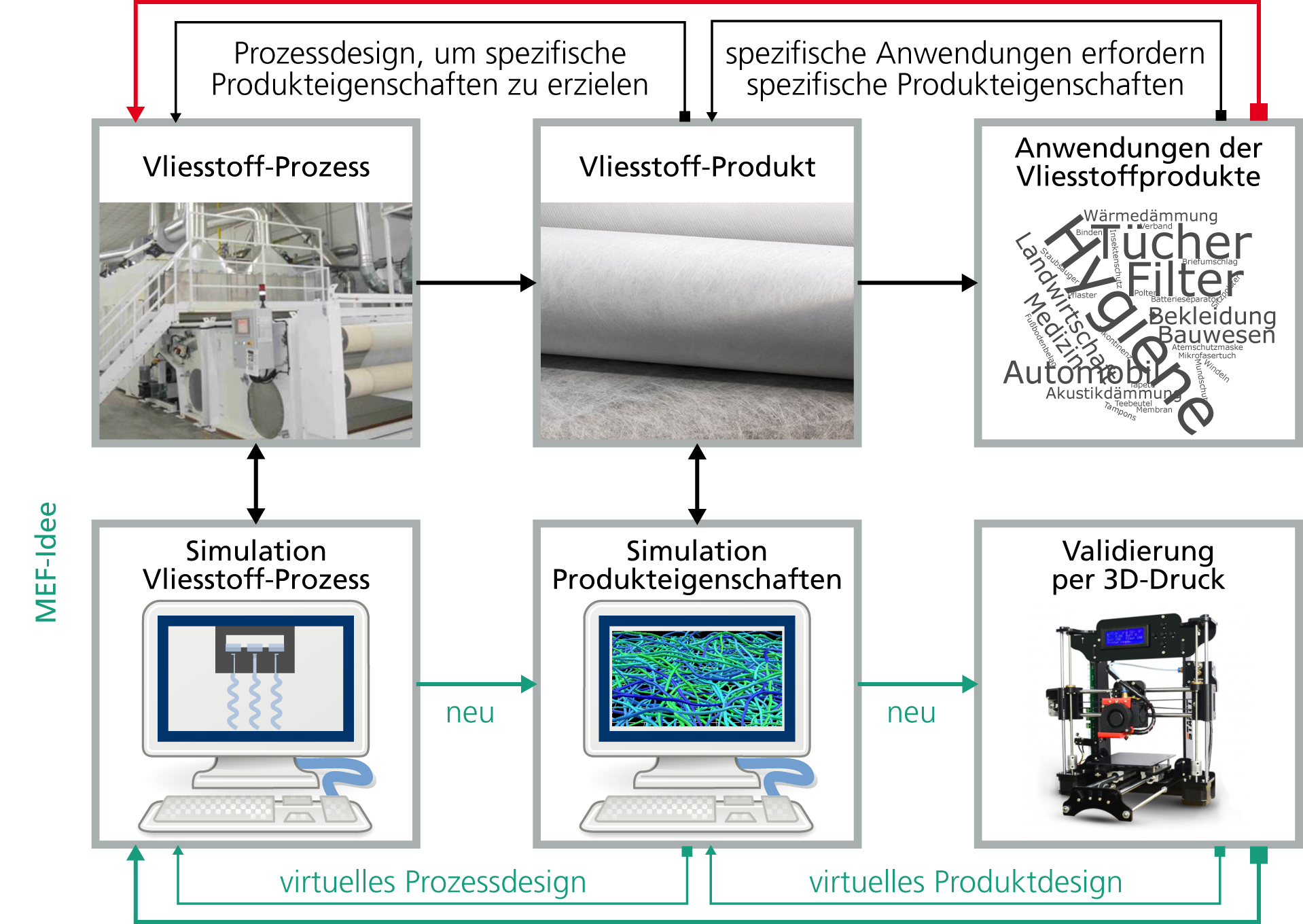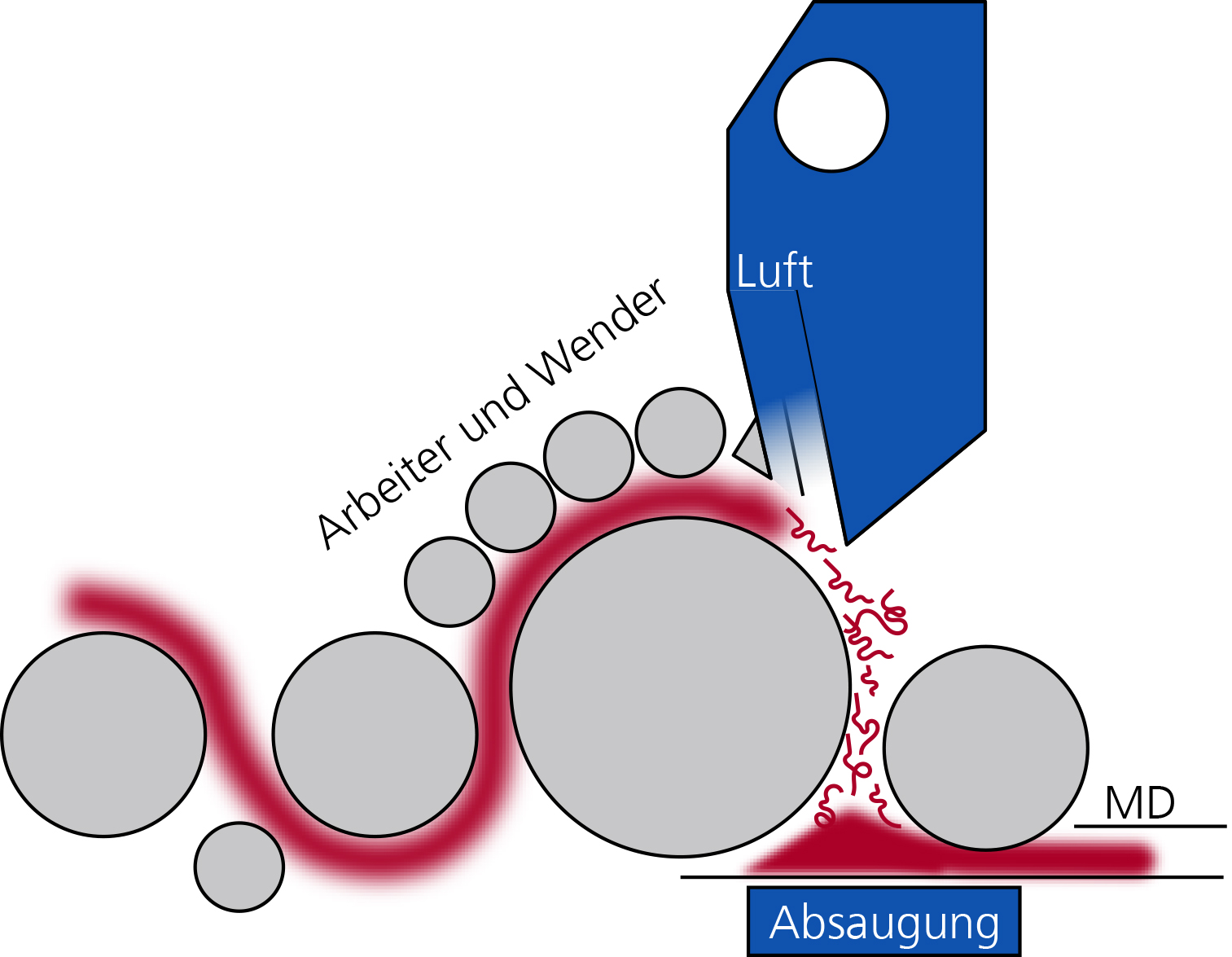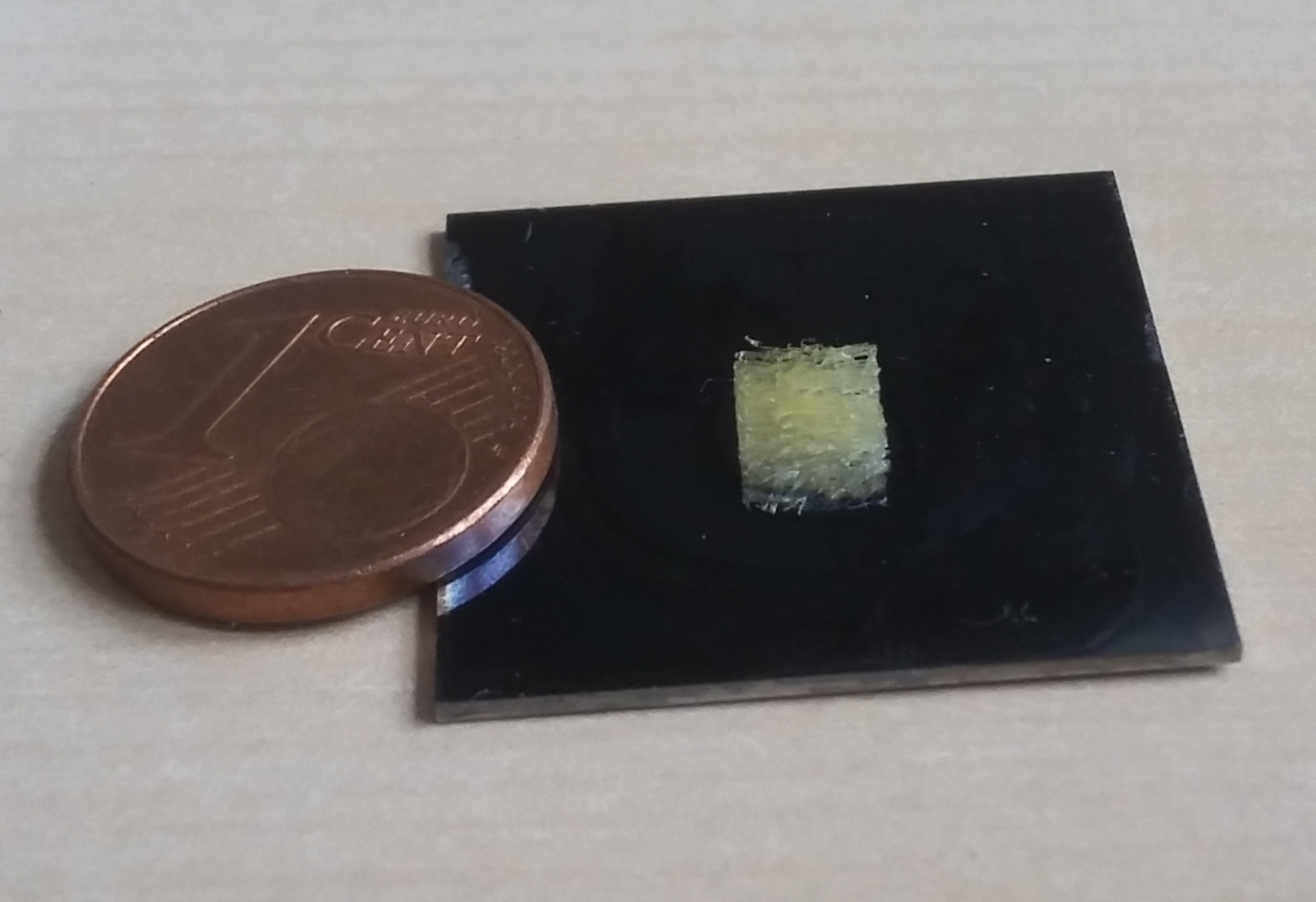In the cross-departmental ViDestoP project, the entire nonwovens production chain is the focus of our research. We combine expertise and competencies of our teams in terms of simulation of production processes, product parameters and validate the simulated material properties using 3D printing. Finally, we use the new findings to optimize the properties of an insulating material as a demonstrator and, consequently, its manufacturing process.
»ViDestoP«: Virtual Design Chain and Stochastic Prototyping of Nonwovens
Fraunhofer Project Videstop: Virtual Design Chain and Stochastic Prototyping of Nonwovens
Over the last decade, the annual growth rate for global nonwovens production has averaged 7.3 percent. This is because nonwovens are now used in a very wide range of applications: from medical products and hygiene materials to construction, home furnishings, clothing or in the construction of vehicles. Versatile application possibilities require very specific properties of each nonwoven. The more different the product properties, the more the production processes have to be adapted to them and the more individual the manufacturing process.
Itwm Simulations Digitize Production Chain
According to today's state of the technology in the industry, process and product design is mostly done by learning from mistakes: A trial is directly executed at the production facilities and subsequently evaluated as success or error. Due to the associated downtime of production and real test conditions, this approach is expensive and costs a lot of time. Our digital twins help to digitalize this process by means of simulation. In the future, companies will optimize virtually without production coming to a standstill.
Already in past projects, digital twins for subareas of nonwovens production were developed at our institute, resulting in ITWM software solutions. Due to the Corona crisis, our expertise on the subject of nonwovens for the production of medical protective masks was also in great demand in various projects, so that we could additionally build on this knowledge. In different work packages and phases, the following goals were defined and achieved in the project:
Process Simulation and Simulation of Product Properties
In the production of nonwovens of any kind, the interactions between fibers and surrounding turbulent air flow are particularly important for the end product. In this project, the focus was on the production of aerodynamic random nonwovens and, associated with this, the requirements of nonwovens producers for the so-called airlay systems.
The airlay process works roughly according to the following principle (compare also principle sketch):
- First, the raw material – for example fiber mats made from renewable raw materials or recycled plastic fibers – is opened by the so-called workers and clearers.
- The separated fibers are then thrown into an air stream by a large cylinder, the so-called tambour.
- The highly turbulent air flow swirls the fibers and then deposits them on a conveyor belt. The suction under the conveyor belt compresses the fiber material deposited there into a nonwoven fabric.
Depending on the material and process properties, highly different nonwovens are produced in this way. The aim in the production of insulating materials, for example, is to produce maximum-volume nonwovens while using as little raw material as possible. In addition, energy consumption should be kept as low as possible.
Our department »Transport Processes» has been simulating the dynamics of fibers in turbulent flows with the software FIDYST (Fiber Dynamics Simulation Tool) for years. In the past, the focus was on energy consumption and the deposition of the fibers on the conveyor belt.
In the end, however, the mechanical and thermal properties as well as the quality of the nonwovens are decisive for their sale. For the simulation of these material properties, our »Flow and Material Simulation« department has therefore developed the digital material laboratory GeoDict. It has been distributed and further developed worldwide by the spin-off Math2Market GmbH since 2011. The software can be used, among other things, to calculate nonwoven product properties such as permeability, filtration efficiency, acoustic absorption, conductivities, stiffnesses or even mechanical resilience.
In the ViDestoP project, it was possible to combine these two simulation tools into an integrated digital twin for nonwovens production. This means that our researchers combined the digital twins for the process (FIDYST) and the material properties (GeoDict) in several work steps.
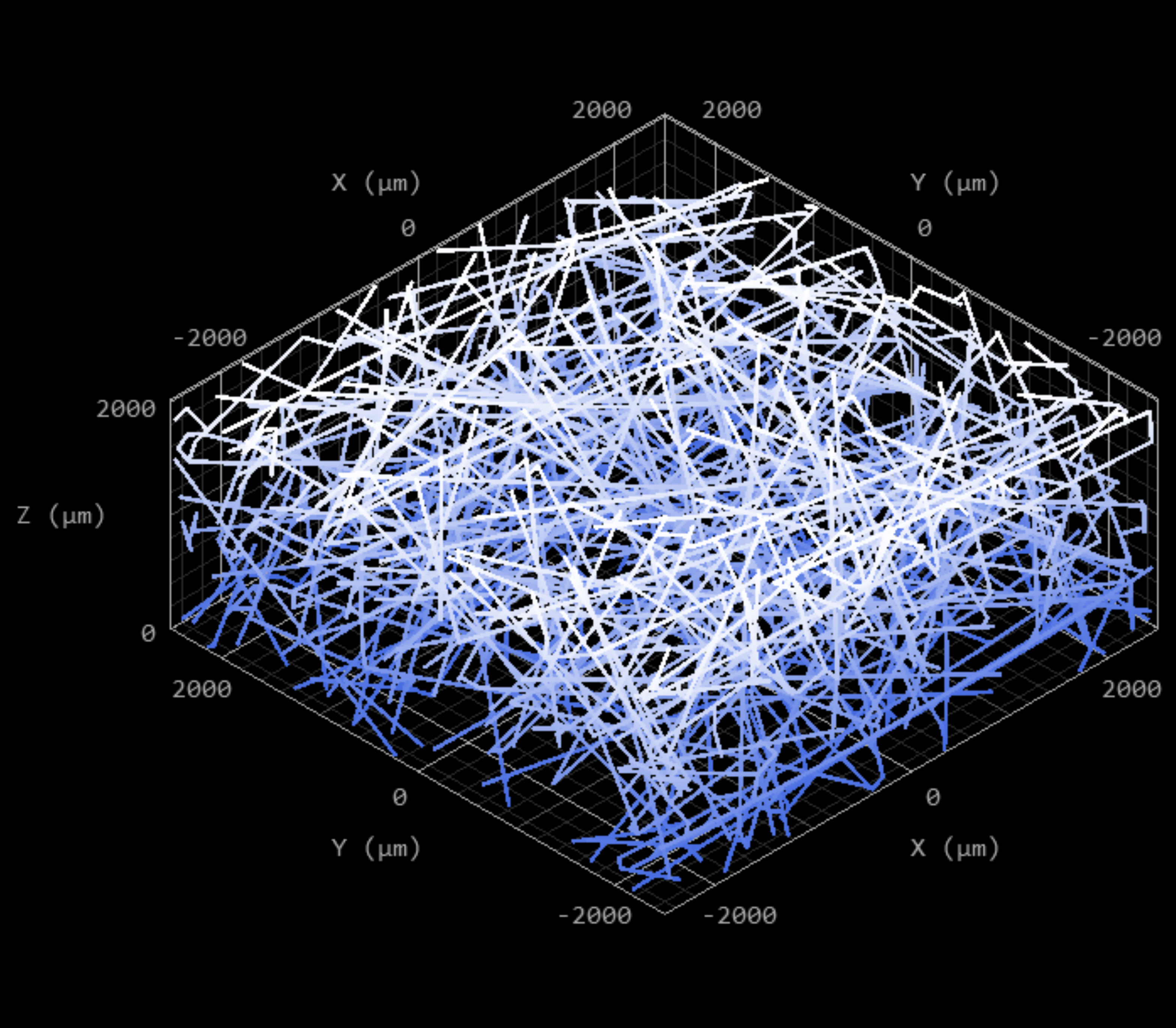
Fiber Deposition as Stochastic 3D Model Validated With 3D Printing
In past research, only a few, individual fibers were simulated in the machine in the process simulation. This neglected how the fibers lay on top of each other on the belt to form the voluminous nonwoven. In the Fraunhofer project, a 3D model has now been constructed that generates a three-dimensional, voluminous nonwoven layer from the individual fiber laydown in combination with the process parameters of the production line.
This makes it possible for the first time to simulate a three-dimensional nonwoven with real thickness, real width and a sufficiently large length in the direction of the belt – i.e. with dimensions on the macroscale.
What then followed was new conceptual and methodological territory: so-called »Stochastic Prototyping« describes the additive manufacturing of the simulated nonwoven microstructure. To validate the simulated product properties, a team from the »Material Characterization and Testing« department created 3D prints in various steps. Based on this work, the microscopic models of the simulations could then be adapted and refined. Through the ViDestoP project, we were thus able to decisively expand our portfolio for further contract research.
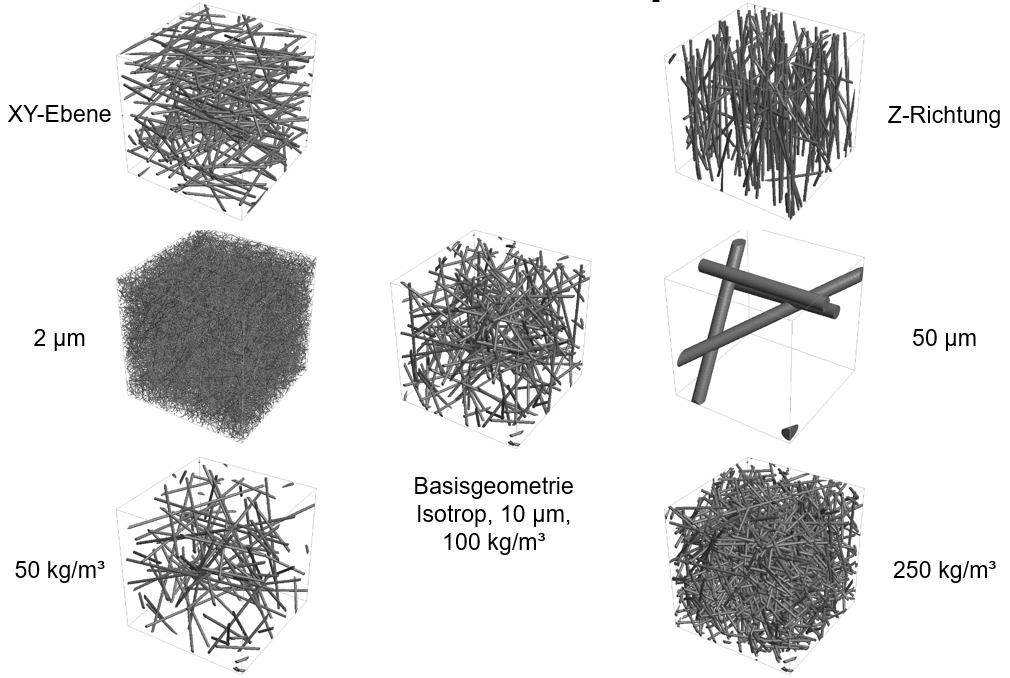
Demonstrator as a Practical Test: Optimizing an Insulating Material
To prove that such a virtual design for the optimization of nonwoven products also works in application, the process was tested in the final project phase using a demonstrator. The choice fell on the already outlined airlay process and on an insulation nonwoven as a concrete product. Such materials are frequently used in the construction industry, and their quality depends heavily on specific process properties – how well does the material insulate? How is heat conducted?
An optimal microstructure of a virtual insulation material was derived from the Design of Experiments (DoE). This demonstrator is verified by additive manufacturing of the optimal structure and the corresponding experimental characterization. The simulation techniques were used to optimize the product parameters in terms of product properties. Specifically on the insulation nonwoven, for example, it has been found that the fiber orientation and density of the material have a great influence on the thermal conductivity. Heat conduction mainly runs in the direction of the fibers.
Based on these findings and the simulation of the optimized product properties, it was also possible to adapt the process for manufacturing the product using a digital twin: Since the nonwoven is to insulate heat in the height direction, it is desirable to arrange the fibers perpendicular to it in the horizontal plane. This is achieved in the manufacturing process by spreading the fibers as widely as possible on the delivery belt. Accordingly, the ramp structure must be as flat as possible. This is just one parameter of many combinations that were investigated in the project and can be analyzed for many nonwovens in the future.
Outlook: Simulations Support in Case of Crisis and Supply Bottlenecks
Even before the Covid19 pandemic, the production of nonwovens was of outstanding importance to our everyday lives. Understanding and optimizing it in detail is crucial for the manufacturing industry. The Corona crisis has brought home to European countries the increased dependence on supplies from the Asian region. We are currently observing increased efforts by the German textile industry to establish production facilities in Germany or Europe. In particular, the targeted conversion of production facilities on the basis of digital twins will help to prevent renewed supply bottlenecks for medical products such as protective masks and protective clothing made of nonwovens quickly and cost-effectively in the event of a crisis.
The construction industry is also growing strongly and, for example, optimally structured insulation materials made of nonwovens are needed. With our expanded portfolio, we are now ideally equipped to provide companies with the best possible support in their nonwovens production issues through simulations.
Project Duration and Funding
ViDestoP started in August 2018 and was funded as part of the Fraunhofer-Gesellschafts internal projects as Mittelstandsorientierte Eigenforschung (MEF) (medium-sized company-oriented proprietary research).

